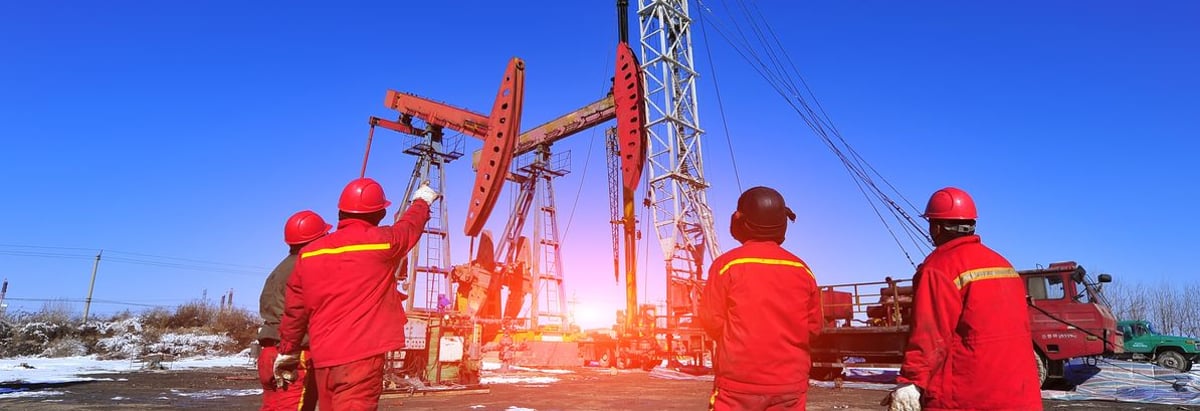Stock Analysis
- Norway
- /
- Energy Services
- /
- OB:SDNS
Health Check: How Prudently Does Shelf Drilling (North Sea) (OB:SDNS) Use Debt?

Legendary fund manager Li Lu (who Charlie Munger backed) once said, 'The biggest investment risk is not the volatility of prices, but whether you will suffer a permanent loss of capital.' It's only natural to consider a company's balance sheet when you examine how risky it is, since debt is often involved when a business collapses. We can see that Shelf Drilling (North Sea), Ltd. (OB:SDNS) does use debt in its business. But the real question is whether this debt is making the company risky.
When Is Debt A Problem?
Debt assists a business until the business has trouble paying it off, either with new capital or with free cash flow. In the worst case scenario, a company can go bankrupt if it cannot pay its creditors. However, a more common (but still painful) scenario is that it has to raise new equity capital at a low price, thus permanently diluting shareholders. Of course, debt can be an important tool in businesses, particularly capital heavy businesses. When we examine debt levels, we first consider both cash and debt levels, together.
Check out our latest analysis for Shelf Drilling (North Sea)
What Is Shelf Drilling (North Sea)'s Debt?
As you can see below, Shelf Drilling (North Sea) had US$237.2m of debt, at March 2024, which is about the same as the year before. You can click the chart for greater detail. On the flip side, it has US$13.6m in cash leading to net debt of about US$223.6m.
How Healthy Is Shelf Drilling (North Sea)'s Balance Sheet?
According to the last reported balance sheet, Shelf Drilling (North Sea) had liabilities of US$62.0m due within 12 months, and liabilities of US$246.3m due beyond 12 months. Offsetting this, it had US$13.6m in cash and US$26.8m in receivables that were due within 12 months. So it has liabilities totalling US$267.9m more than its cash and near-term receivables, combined.
When you consider that this deficiency exceeds the company's US$240.1m market capitalization, you might well be inclined to review the balance sheet intently. Hypothetically, extremely heavy dilution would be required if the company were forced to pay down its liabilities by raising capital at the current share price. When analysing debt levels, the balance sheet is the obvious place to start. But it is future earnings, more than anything, that will determine Shelf Drilling (North Sea)'s ability to maintain a healthy balance sheet going forward. So if you want to see what the professionals think, you might find this free report on analyst profit forecasts to be interesting.
In the last year Shelf Drilling (North Sea) wasn't profitable at an EBIT level, but managed to grow its revenue by 80%, to US$114m. With any luck the company will be able to grow its way to profitability.
Caveat Emptor
Even though Shelf Drilling (North Sea) managed to grow its top line quite deftly, the cold hard truth is that it is losing money on the EBIT line. Indeed, it lost US$13m at the EBIT level. When we look at that alongside the significant liabilities, we're not particularly confident about the company. It would need to improve its operations quickly for us to be interested in it. Not least because it had negative free cash flow of US$46m over the last twelve months. So suffice it to say we consider the stock to be risky. For riskier companies like Shelf Drilling (North Sea) I always like to keep an eye on the long term profit and revenue trends. Fortunately, you can click to see our interactive graph of its profit, revenue, and operating cashflow.
When all is said and done, sometimes its easier to focus on companies that don't even need debt. Readers can access a list of growth stocks with zero net debt 100% free, right now.
New: Manage All Your Stock Portfolios in One Place
We've created the ultimate portfolio companion for stock investors, and it's free.
• Connect an unlimited number of Portfolios and see your total in one currency
• Be alerted to new Warning Signs or Risks via email or mobile
• Track the Fair Value of your stocks
Have feedback on this article? Concerned about the content? Get in touch with us directly. Alternatively, email editorial-team (at) simplywallst.com.
This article by Simply Wall St is general in nature. We provide commentary based on historical data and analyst forecasts only using an unbiased methodology and our articles are not intended to be financial advice. It does not constitute a recommendation to buy or sell any stock, and does not take account of your objectives, or your financial situation. We aim to bring you long-term focused analysis driven by fundamental data. Note that our analysis may not factor in the latest price-sensitive company announcements or qualitative material. Simply Wall St has no position in any stocks mentioned.
Have feedback on this article? Concerned about the content? Get in touch with us directly. Alternatively, email editorial-team@simplywallst.com
About OB:SDNS
Shelf Drilling (North Sea)
Operates as a shallow water offshore drilling contractor in Denmark, Qatar, the United Kingdom, and Norway.

